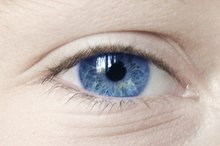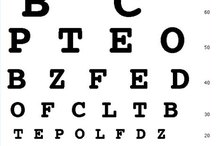Medications That Affect Color Vision
Seeing the world through rose-colored glasses to some people means more than simply being optimistic: It could literally mean seeing the world in a rosy hue. Certain medications affect the cones -- the “color-sensing” cells of the eye -- meaning that you may see things in a different color that you're used to. Conversely, you may also lose certain colors from your visual palette altogether. Drugs most notable for color vision changes include sildenafil citrate (Viagra), digoxin (Lanoxin), amiodarone (Cordarone), hydroxychloroquine (Plaquenil) and ethambutol (Myambutol) 2.
Blue Vision
These side effects peak within 1 to 2 hours after you take the drug. The visual effects are dose dependent, meaning the higher the dose, the greater your likelihood of experiencing the side effect. According to reports from Viagra’s manufacturer, Pfizer, up to 50 percent of men taking doses of 200 mg or more will experience these symptoms. Fortunately, no permanent toxic effects have been reported.
- These side effects peak within 1 to 2 hours after you take the drug.
Yellow Vision
Different Color Blobs & Shapes in Vision
Learn More
The cardiac glycosides are a class of drugs used to treat congestive heart failure and abnormal heart rhythm. Extracted from the digitalis plant, digoxin (Lanoxin) is the only available preparation of this drug in the United States. It may in rare cases cause blurred vision and yellow tinting of the vision, called xanthopsia 23. This side effect is harmless and reverses when you stop taking the drug. Artist Vincent van Gogh’s predominant use of yellow in his paintings is suspected to be related to his use of digitalis.
- The cardiac glycosides are a class of drugs used to treat congestive heart failure and abnormal heart rhythm.
- Extracted from the digitalis plant, digoxin (Lanoxin) is the only available preparation of this drug in the United States.
Red-Green Deficit
Certain drugs can slowly damage the optic nerve over time, even in nontoxic doses. The optic nerve transmits visual information to the brain, and damage leads to progressively poorer vision and “dyschromatopsia,” specifically red-green color blindness 25. Amiodarone (Cordarone), used to regulate heart rhythm, and the tuberculosis drug ethambutol (Myambutol) can have these effects. Hydroxychloroquine (Plaquenil), used to treat joint and skin conditions, has increased risk of these effects when taken for five years or longer. Stopping the drug does not reverse whatever damage has occurred. Your doctor will typically require you to have an eye exam before you start taking one of these drugs, with close monitoring of your vision afterward.
- Certain drugs can slowly damage the optic nerve over time, even in nontoxic doses.
- Your doctor will typically require you to have an eye exam before you start taking one of these drugs, with close monitoring of your vision afterward.
Signs to Monitor
Different Color Blobs & Shapes in Vision
Learn More
If you’ve started a new medication and notice a change in your vision, you should notify your eye doctor as soon as possible 2. These changes could include alterations in color perception, blurred vision, dim or darker vision, difficulty seeing at night or light sensitivity. If your doctor finds that your symptoms are related to your medication, she will reevaluate drug dosage and frequency. Maintaining regular checkups with your eye doctor while taking medication that can potentially damage the optic nerve is of utmost importance. Routine exams are key to recognizing any problems before the visual effects become irreversible.
- If you’ve started a new medication and notice a change in your vision, you should notify your eye doctor as soon as possible 2.
Related Articles
References
- Retina & Vitreous: Carl Regillo, M.D. et al.
- Vision Web: Viagra and Vision
- Eye: Xanthopsia and van Gogh's Yellow Palette
- Clinical Ophthalmology: Clinical Approach to Optic Neuropathies
Writer Bio
Bernadette Hromin has been a practicing ophthalmologist in the New York area for more than 10 years. Having a professional fluency in Spanish, she writes a blog which educates health care workers in the bilingual clinical environment. As an eye doctor, Bernadette is a stickler about eating one green vegetable daily.








